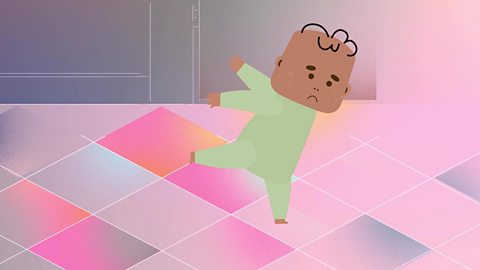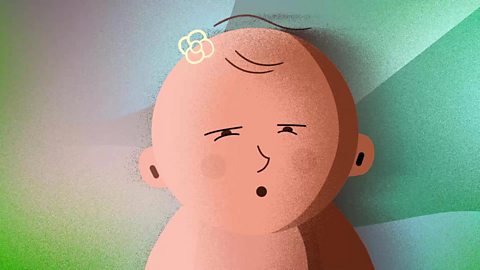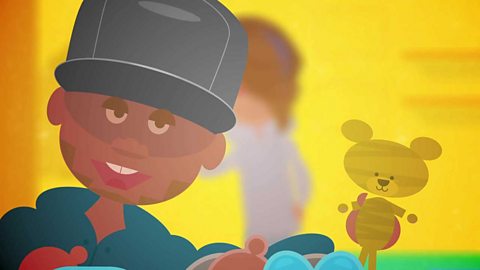In their first year, you'll see a lot of physical development in your baby - from fine motor skills needed to put building blocks in place, to learning to balance and taking their first steps.
Crawling is a key milestone for many parents, as they wait with baited breath for the moment their child starts to explore the world on their own. If this comes later or in a different style than expected, they might start to feel a little anxious.
To bring you the facts and frequently asked questions around crawling, we spoke to health visitor Kerry Bennett from Better Start Bradford.
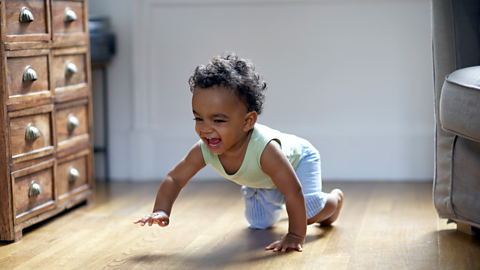
At what age do babies start crawling?
It depends, Kerry explains, but from seven to ten-months old on average.
Every child is different and many factors will affect if and when they start crawling - you might see some signs of crawling or shuffling at five months, whereas some children don't crawl at all.
Those early signs would be rocking, getting up onto all fours, rolling and generally being more curious of the world around them. ŌĆ£They're thinking about where they want to be and using creative ways to do so,ŌĆØ Kerry says.
For those babies who don't crawl at all, Kerry doesn't expect that to impact their learning to walk. She saysŌĆ”
ŌĆ£With milestones like crawling and walking, itŌĆÖs an opportunity for parents to compare: ŌĆśWhatŌĆÖs your baby doing? WhatŌĆÖs my baby doing?ŌĆÖ So understandably they hook onto the ages, but youŌĆÖve got to look at your child as a whole.ŌĆØ
ŌĆ£So, if theyŌĆÖre not crawling, are they sitting? Are they using their motor skills in other ways? Are they pulling to stand on the side of the cot? There are other things that demonstrate coordination and motor skills.ŌĆØ
From sitting up to crawling...
How babies learn to crawl
Babies start to crawl from seven to ten-months old on average, but there's a lot more to look out for.
ŌĆ£There are some key steps we could track back really early, to a couple of weeks old or so, to three or four months,ŌĆØ Kerry explains.
Tummy time is important in the first couple of months. Some children don't like being put on their front, but we know it's great for developing head control and upper body strength. Then, the next step would be reaching and grabbing and supporting their body weight.
As early as five months, you might see them start to shuffle, roll, rock backwards and forwards and get up onto all fours, which is a sign that they might want to start crawling.
The most important thing is baby's curiosity in the world around them. This encourages them to move from A to B in whatever way they know how, improving their physical skills.
When do babies sit up and crawl? Does sitting help with crawling?
Babies might start to sit up at five to eight months-old on average, Kerry says. Sitting up is a fantastic indication of your baby's physical development, particularly core strength and the ability to hold their head up

Crawling styles and stages - is my baby crawling normally?
There are as many 'crawling styles' as there are crawling babies - each is unique!
You might identify your baby's style withŌĆ”
the classic 'commando crawl'
the bum shuffle
the belly crawl
a worm-style movement
moving sideways like a crab
crawling backwards
Think about adults, we all walk differently. It's about our coordination and strengths, alongside our development and the environment we learnt in.
Having the ability to move from place to place is the most important thing.
How to help your baby learn to crawl
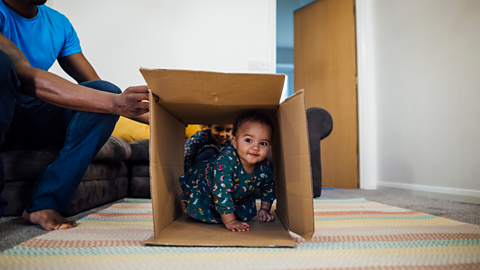
How to encourage your baby to crawl
It's all about being a role model - get down on the floor with your baby and play!
Spending time on the floor, with space around them, will encourage your baby to lift themselves, build strength and start to move on their own.
ŌĆ£Develop a safe, curious environment. Place a bright, colourful toy just out of reach - a toy that the child naturally wants to go and grab,ŌĆØ Kerry says.
And think about the clothes your child is wearing. Soft, loose clothes are ideal, as these give the child the ability to move to their heart's content comfortably. Avoid restrictive, slim-fit clothing that might impede their movement.
Safety tips
It's all about viewing a space through the eyes of your child - make it fun and curious for them, but think about things that you don't want them to reach.
Examples include hot drinks, and furniture that isn't properly secured, but think about anything within baby's reach. It's in their nature to pull and touch and bring things to their mouths if they can, as they explore. Stay one step ahead!
Do you need crawling toys and aids?
You don't need crawling toys to help their development. You are your child's favourite toy!
ŌĆ£It's about interaction, role modelling and opportunities to copy. They want a play mate,ŌĆØ Kerry says.
A comfortable floor environment is all you need, but you can incorporate their favourite teddies or toys if they need that extra motivation.

FAQs
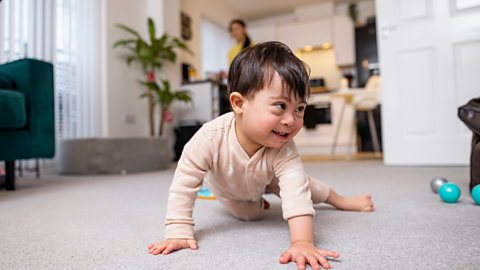
Why is my baby crawling backwards?
Kerry doesn't know if there is a scientific reason behind it, but says that she has seen plenty of babies move this way, before crawling forwards or taking their first steps. See more on crawling styles above.
Is crawling a developmental milestone?
ŌĆ£It is, but children will crawl in their own time and some won't at all.ŌĆØ
Kerry reiterates that it is important to look for the signs of your child's physical development as a whole - whether they're sitting up, rocking backwards and forwards, or sitting up off of the ground.
What if my baby isn't crawling yet?
Don't worry, some babies crawl later than others. Some babies don't crawl at all.
Look for wider signs of physical development, like rocking or shuffling, and if you don't see a lot of progress by 12 months, it might be worth mentioning to your health visitor.
The health visitor could run through the advice Kerry has given above, as well as looking at your child to see where the developmental gaps might be and what can be encouraged to help them as an individual.
Can babies crawl at four months old?
It's unlikely.
ŌĆ£I havenŌĆÖt seen this personally,ŌĆØ Kerry says. ŌĆ£And it's not something I'd expect to see.ŌĆØ
Do late crawlers walk late?
According to health visitor Kerry, no.
Some babies don't crawl at all, they just pull themselves up to stand and become very confident walkers quickly.

